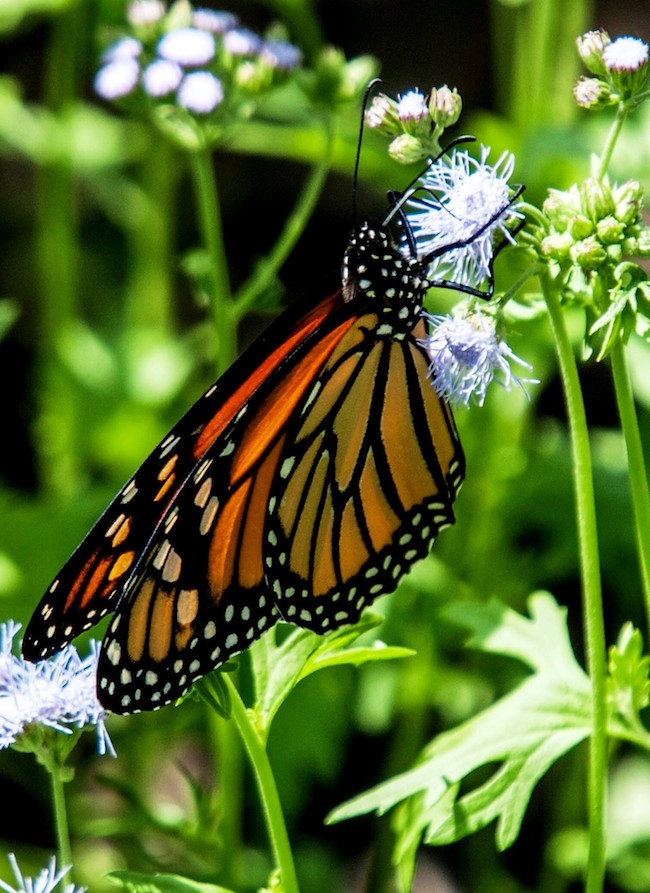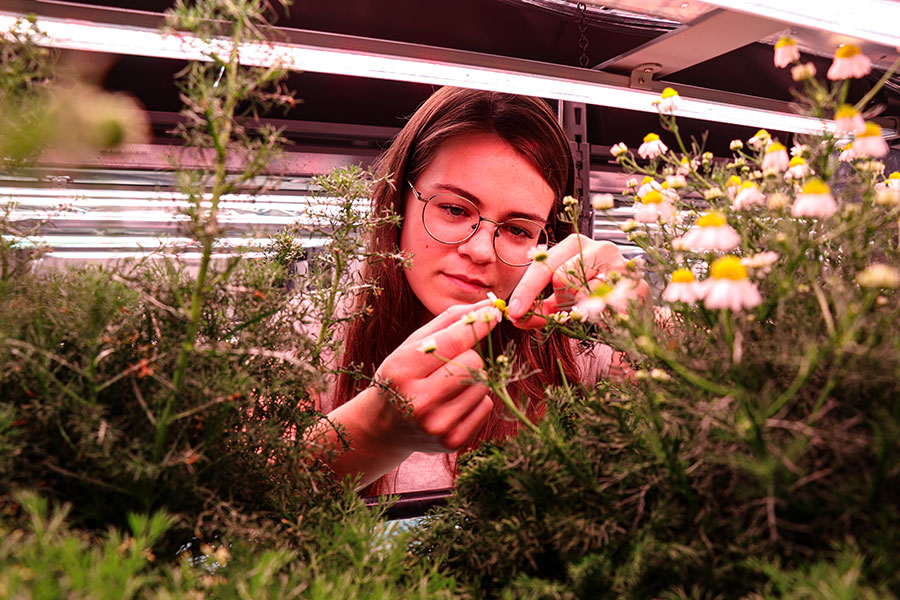When I moved into my new house about this time last year, I was quick to notice my neighbor’s flowers across the street. I could see drifts of wonderful, tall, blue flowers coupled with the complementary orange of swirling Gulf fritillary butterflies. I knew immediately that my neighbor was a real gardener, as those showy blooms could be identified as the native blue mistflower known botanically as Conoclinium coelestinum.
There is something special about gardeners that grow native perennials like blue mistflowers, Joe Pye weeds and goldenrods. Thanks to my neighbor’s generosity in sharing some emerging spring volunteers, the Rain Garden at the University of Georgia’s Coastal Georgia Botanical Gardens now has large patches of blue partnered with goldenrod, liatris and white boneset. Like my neighbor’s blooms — and the native blue mistflowers you see on the roadside — ours too are butterfly magnets.
This blue mistflower is native in lands from Texas to Nebraska, northward to New York and virtually every state south. Among the three mistflowers native to the United States, blue mistflower has the largest range. It starts blooming toward the end of July, yielding dazzling, frosty-blue blooms until November, which lines up perfectly with peak butterfly season.
As I mentioned, there are three species of mistflowers native to the U.S., and Texas is the only state that can lay claim to all three. Beyond the blue mistflower, there is the betony-leaf mistflower, C. betonicifolium, native only to Texas; and palmleaf mistflower, C. dissectum (formerly C. greggii), native to Texas, New Mexico and Arizona. I treasure all three.
Palmleaf mistflower, sometimes known as Gregg’s blue mistflower or Texas Ageratum, has the same cool, blue flowers borne on two-foot-tall plants. They are cold hardy through zone 7. The leaves are deeply dissected, giving it even more landscape appeal. It has an unbelievably long season of bloom and has performed wonderfully in the humid Southeast. They not only attract queen and monarch butterflies, but all kinds of suphurs, skippers, crescents and fritillaries.
The betony-leaf mistflower has foliage similar to a succulent’s. It thrives in the sandier soils along the Texas coast, and I desperately want to try it in Savannah. Most report that it is hardy to zone 9, but I want to test it myself. When I worked at the National Butterfly Center in Mission, Texas, we grew betony-leaf mistflowers close together. They pushed upward to form a 2- to 3-foot hedge of glorious, blue blooms packed with butterflies.
I’m touting the blue mistflower, but regardless of the one you want to grow, select a site in full sun for best blooming and to keep the plants compact and better branched. The soil should be moist and fertile and not prone to drying out like a brick. You will want to space plants 12- to 18-inches apart. Conocliniums spread by both rhizomes and seeds, so plan on doing a little garden management. It is well worth it for these terrific flowers.
The blue mistflower and palmleaf mistflower respond well to any cutting back, so feel free to do so if the plants begin to look a little leggy or if you simply wish they were bushier.
Blue mistflowers, palmleaf mistflowers, and betony-leaf mistflowers are great choices for cottage gardens and wildflower meadows, and they’re unbeatable for the butterfly garden or backyard wildlife habitat. Despite the fact that these are such persevering, beautiful perennials and bloom for months, they are typically only available from specialty native suppliers or pass-along plants from friends or neighbors.
I hope you will search them out — the butterflies will love you for it. Follow me on Twitter @CGBGgardenguru. Learn more about the University of Georgia Coastal Botanical Gardens at the Historic Bamboo Farm at www.coastalgeorgiabg.org.









